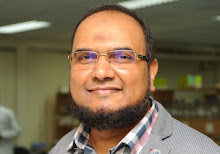Earliest Directly-Dated Human Skull-Cups
Background
The use of human braincases as drinking cups and containers has extensive historic and ethnographic documentation, but archaeological examples are extremely rare. In the Upper Palaeolithic of western Europe, cut-marked and broken human bones are widespread in the Magdalenian (~15 to 12,000 years BP) and skull-cup preparation is an element of this tradition.
Principal Findings
Here we describe the post-mortem processing of human heads at the Upper Palaeolithic site of Gough's Cave (Somerset, England) and identify a range of modifications associated with the production of skull-cups. New analyses of human remains from Gough's Cave demonstrate the skilled post-mortem manipulation of human bodies. Results of the research suggest the processing of cadavers for the consumption of body tissues (bone marrow), accompanied by meticulous shaping of cranial vaults. The distribution of cut-marks and percussion features indicates that the skulls were scrupulously 'cleaned' of any soft tissues, and subsequently modified by controlled removal of the facial region and breakage of the cranial base along a sub-horizontal plane. The vaults were also ‘retouched’, possibly to make the broken edges more regular. This manipulation suggests the shaping of skulls to produce skull-cups.
Conclusions
Three skull-cups have been identified amongst the human bones from Gough's Cave. New ultrafiltered radiocarbon determinations provide direct dates of about 14,700 cal BP, making these the oldest directly dated skull-cups and the only examples known from the British Isles.
Citation: Bello SM, Parfitt SA, Stringer CB (2011) Earliest Directly-Dated Human Skull-Cups. PLoS ONE 6(2): e17026. doi:10.1371/journal.pone.0017026Read Media coverage at BBC: http://www.bbc.co.uk/news/science-environment-12478115
Watch BBC report below.


